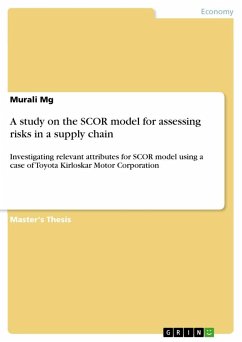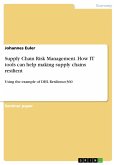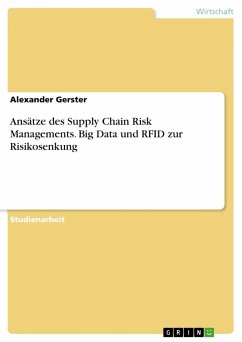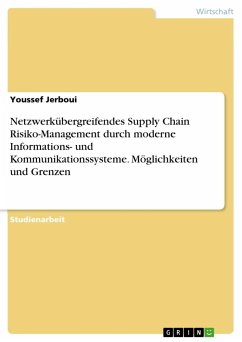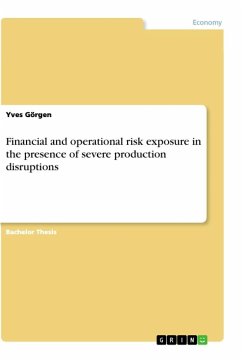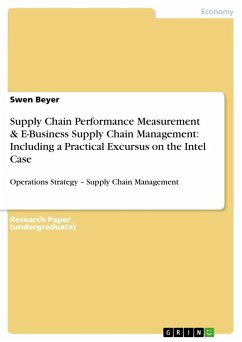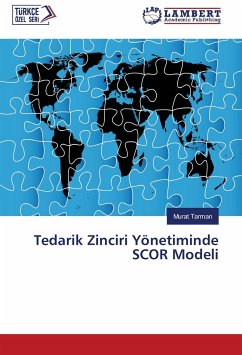Master's Thesis from the year 2014 in the subject Business economics - Supply, Production, Logistics, grade: 64, University of Lincoln (PG Business School), course: MSc in Supply Chain and Logistics Management, language: English, abstract: This paper discusses the importance of the SCOR model in assessing risks within the supply chains and makes an attempt to determine how the model applies its scope in addressing risks from internal employees. The application of the SCOR model is only limited to study and to analyze the concepts of supply chain vulnerability and the stakeholder's interests and doesn't extend beyond that. The model is applied to Toyota Kirloskar Motor Corporation, by configuring its existing supply chain and identifying the potential internal risks. Based on the analysis, recommendation and suggestions are submitted for a variant of attributes to the SCOR model.In a complex dynamic business environment, supply chains have become the most integral part of the organization. They now, are the tools of reducing costs and adding value (additional) to a product or service. Henceforth, they can be regarded as the crucial part of an organization. However, the quest of organizations and globalization with the aim of constructing an effective means of supply and supply chain has increased the complexity of the supply chain which can often reduce the knowledge and understanding the of the exposure to risk.The risks can arrive from anywhere or from any source. For instance, imagine the port and the harbor industry which was wrecked by Tsunami which erupted in Indian Ocean 2004. This was an unanticipated risk which can be categorized as natural risk (natural disaster). Risks from suppliers can be untimely delivery, increased in costs than agreed or labor strikes and external risks can change government economic policies (changing tax rates and subsidies etc.).While few risks can be anticipated, whilst majority of risks cannot be forecasted (decease offactory worker due to unhealthy conditions or heart stroke), this demands the ongoing need for an effective risk management frame work for assessing risks in the supply chain management.The incorporation of the Supply chain operations model for assessing and evaluating risks have benefitted many supply chains and organizations. Yet, there are certain limitations of the model that fails to address risks in the supply chain.The SCOR model of assessing risks becomes more complex when it's applied to complex supply chains. The five attributes on which the SCOR model is built has to be tested to determine if there is a need for any other variants or additional attributes that has to be incorporated into the model.

